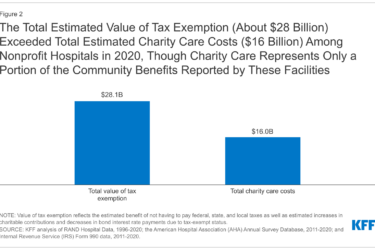Associated Press medical reporter Carla K. Johnson has found that, contrary to common assumptions, emergency rooms could become even more crowded with the passage and implementation of health care reform. Popular wisdom has it that, with more access to insurance thus to primary care, folks will be less likely to go to the emergency room for minor complaints or to allow illness to progress to the point where an emergency visit is necessary. Johnson, an AHCJ board member, gives three big reasons why it’s not that simple:
- There are not (will not) be enough primary care physicians in America to deliver that preventative care.
- At present, the uninsured are no more likely to use the ER than patients with insurance coverage.
- “The biggest users of emergency rooms by far are Medicaid recipients,” Johnson writes. “And the new health insurance law will increase their ranks by about 16 million.”
ERs are crowded, Johnson writes, not only because of a lack of insurance but also because of obstacles inherent in their structure and mission, such as an aging population, more people with chronic illnesses, the closures of many ERs in the 1990s and the demand for beds for both emergency patients and patients scheduled for elective surgeries that bring more money.
AHCJ Immediate Past President Trudy Lieberman praised Johnson’s story and linked it to reporting by The Boston Globe on the impact of that state’s reform law upon emergency room use. So far, events in Massachusetts reinforce Johnson’s predictions.
The Boston Globe revisited Massachusetts’s ER conundrum last week, and reported pretty much what it did last year—that despite the state’s reform law, which mandated everyone have coverage beginning in July 2007, emergency room use is rising. Last year, the state’s Division of Health Care Finance and Policy cautioned that it was too early to draw any conclusions from the seven percent rise in ER visits between 2005 and 2007. Now the agency is saying that expanded coverage may be one reason for the 9 percent rise from 2004 to 2008. According to commissioner David Morales, many studies have shown that expanding coverage does not reduce emergency room visits. That’s because the uninsured “are not really responsible for significant ER use,” he told the Globe.









